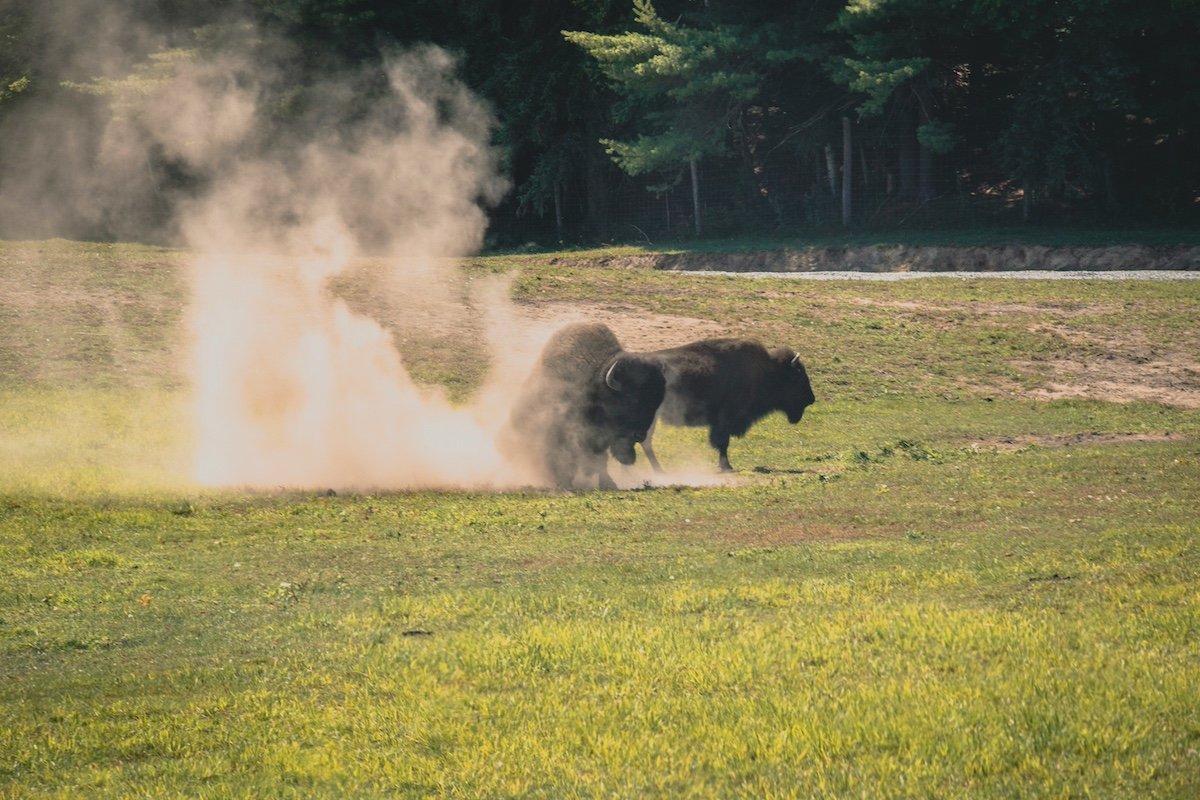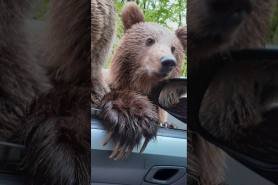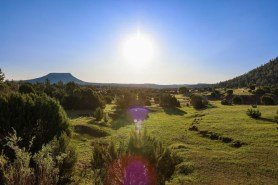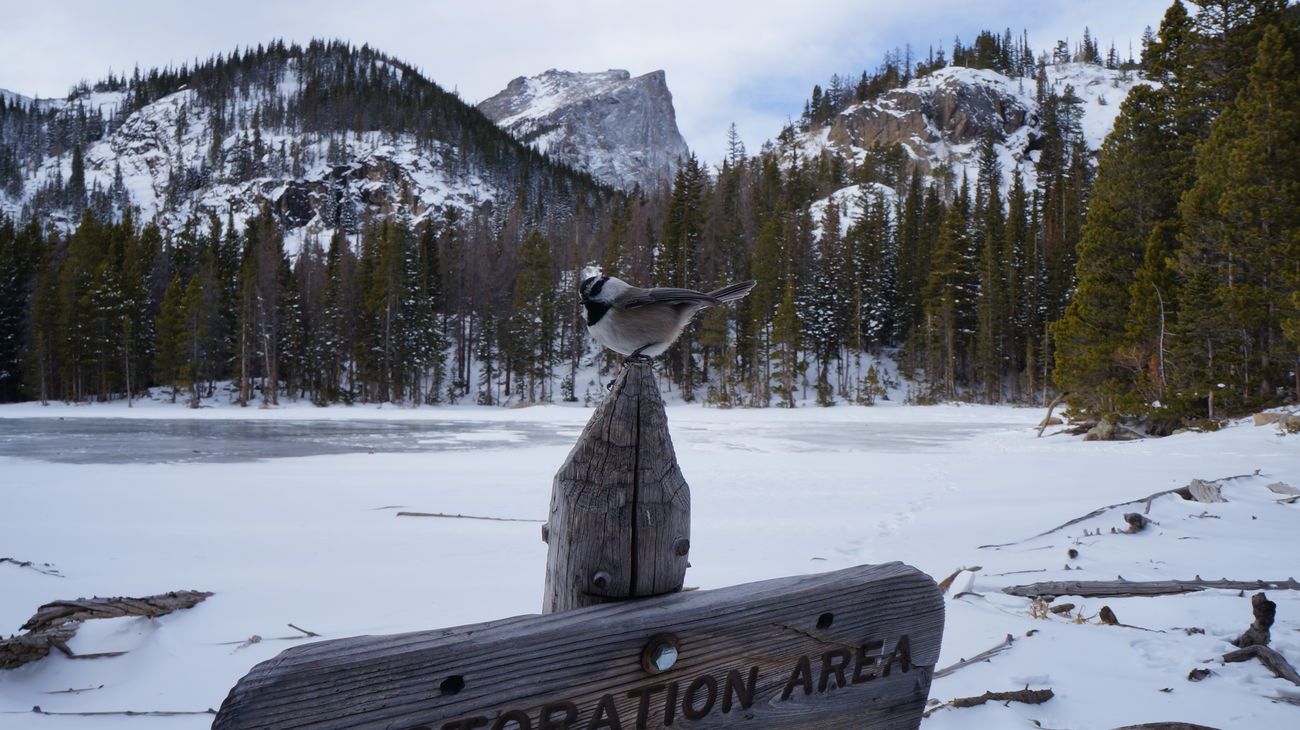

The Rocky Mountains are an outdoor paradise with dramatic views of massive mountains, alpine lakes, and abundant wildlife.
There are ample hiking trails for people to explore, and one of the best spots to capture the Rockies is no other than Rocky Mountain National Park. In this one popular destination, you can find hundreds of species of animals, including over 270 species of birds. If you’re a birder or just like seeing rare species of birds, you are in luck. Here’s a look at the rarest bird species that can be spotted while hiking in the Rocky Mountains.11
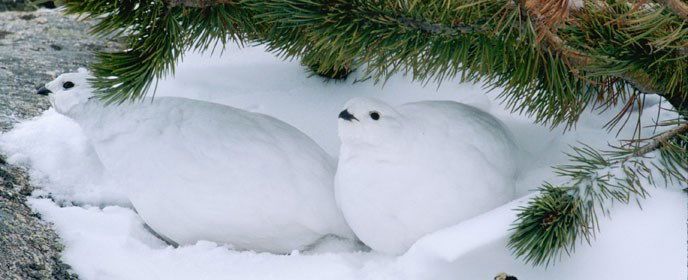
White-tailed Ptarmigan
This bird may be hard to spot unless you have a good eye. In the winter, it turns perfectly white, and in the summer, it matches the rocks of the mountains. The white-tailed ptarmigan is found at high elevations as these birds breed above tree lines. Here’s some more information:
- White-tailed ptarmigans stay in the mountains year-round and do not migrate.
- Warm weather stresses this bird out. They’ll seek out snow as the temperature rises.
- Their diet is primarily seeds, nuts and plants.
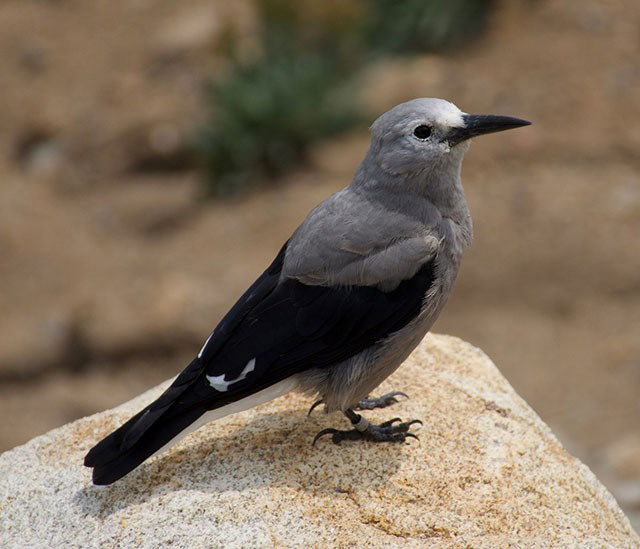
Clark’s Nutcracker
The Clark’s nutcracker is a medium-sized gray bird with black wings found mostly in the western united states at elevations of 3,000 feet and up. The bird can spend most of the year in the mountains, although they will sometimes migrate a short distance to a lower elevation in the winter. Some more facts:
- These birds are one of the few members of the crow family where the male will help incubate the eggs.
- Officials in places like Rocky Mountain National Park say these birds often ask for handouts, but please do not feed them.
- The oldest Clark’s nutcrack on record was reportedly 17 years and five months old.
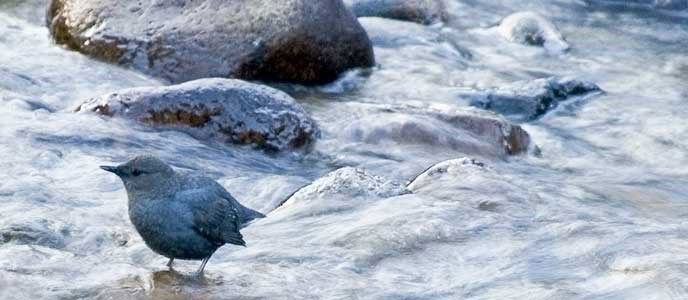
American Dipper
The American dipper gets its name from constantly bobbing its head in and out of water. This bird primarily eats small aquatic insects and tiny fish. American dippers are predominantly grey with a slightly browner head. Plus:
- You can find them around chilly-flowing rivers and creeks.
- These birds also do not migrate and live in the area year-round.
- Newborn American dippers learn to swim and dive within a month of hatching.
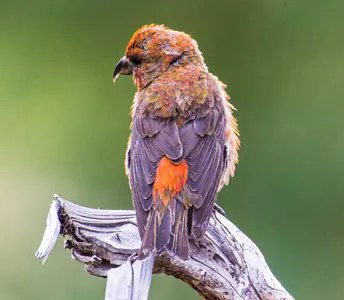
Red Crossbill
Upon seeing a red crossbill, your first thought may be that this bird is injured. As the name suggests, their break doesn’t quite line up. The unique bill helps them gather their food of conifer seeds from a pine cone. Here are a few more facts about this bird:
- The red crossbill’s beak also allows them to create distinct sounds.
- These birds don’t necessarily migrate but will move to where they can find pinecones.
- They are part of the finch family.
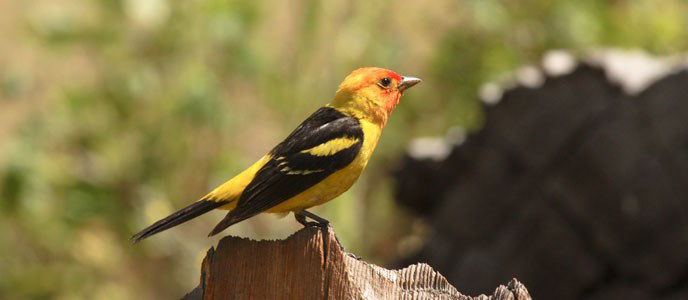
Western Tanager
The western tanager is a colorful bird that’s easy to spot by its bright yellow body that gives way to an orange and red head. You can find these birds in more wooded areas around Douglas fir trees. Did you know that:
- Western tanager will migrate to Mexico and Central America in the wintertime.
- They breed as far north as Canada’s Northwest Territories.
- Both parents will bring food to their nests.

Birds of Prey
There are at least dozens of species of birds of prey that call the Rockies home. These birds include unique animals like eagles, hawks, ospreys and vultures. While these are not rare, spotting one is still rewarding. Some cool birds of prey facts include:
- Red-tailed hawks’ eyesight is eight times better than a human’s.
- Golden eagles can have a six-foot wingspan.
- Peregrine falcons can dive bomb at their prey at speeds around 200 mph.
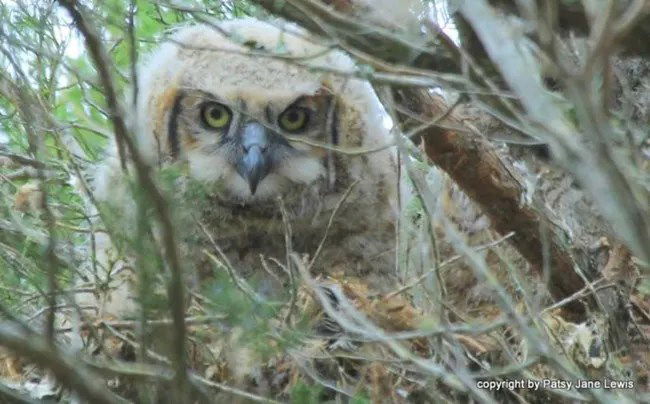
Owls
There are also multiple owl species. In places like Rocky Mountain National Park, you can find three different species of owls, the great horned owl, northern pygmy-owl and boreal owl. As you might expect, these birds are primarily nocturnal hunters, so you may only see them out and about a little during the day. Did you know owls can:
- Rotate their head up to 270 degrees.
- A group of owls is called a parliament.
- Owls hunt not only small mammals like mice but also other birds, reptiles and insects.

